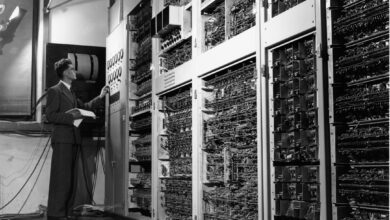Metals in Motion: Analyzing the Interplay of Industry, Investment, and Economic Trends

The world of metals is both complex and dynamic, serving as a crucial barometer for economic health and a key player in investment strategies. As industries evolve and sustainability becomes a priority, the demand for various metals is shifting, reflecting broader economic trends and technological advancements. This article delves into the multifaceted role of metals in today's markets, focusing on silver's unique position as both an industrial commodity and an investment vehicle. We will explore how copper prices serve as a litmus test for global economic conditions, examine the rising demand for rare earth metals driven by green technologies, and analyze the investment landscape of platinum versus palladium. Additionally, we will discuss how inflation influences the prices of these precious and industrial metals, the future of aluminum in a sustainable economy, and the impact of mining regulations on market dynamics. Join us as we navigate the intricacies of metal markets and uncover strategies for diversifying investment portfolios in an ever-changing landscape.
- 1. **Navigating the Metal Markets: Silver's Dual Role in Industry and Investment**
- 2. **Copper's Economic Pulse: Understanding Price Trends and Global Indicators**
1. **Navigating the Metal Markets: Silver's Dual Role in Industry and Investment**
Silver plays a multifaceted role in both industrial applications and investment strategies, making it a unique metal in the global market. On one hand, silver is a crucial component in various industrial processes, including electronics, solar energy, and medical devices. Its excellent conductivity and antibacterial properties drive demand from sectors such as renewable energy, where silver is essential for photovoltaic cells in solar panels. As industries increasingly focus on green technologies, the demand for silver is anticipated to rise, positioning it as a critical metal in the fight against climate change.
On the other hand, silver also serves as a popular investment vehicle, often seen as a safe haven during economic uncertainty. Investors turn to silver as a hedge against inflation and currency fluctuations, viewing it as a tangible asset that can retain value over time. The dual nature of silver—both as an industrial commodity and an investment asset—creates unique market dynamics. Price fluctuations can be influenced by industrial demand, speculative trading, and macroeconomic factors, such as interest rates and geopolitical tensions.
Understanding the interplay between these two roles is essential for investors and industry stakeholders alike. As industrial demand continues to grow in the context of green technology advancements, coupled with silver's historical significance as an investment asset, the metal's market landscape will likely evolve. This dual role not only highlights silver's importance in contemporary economic structures but also underscores the need for strategic navigation of the metal markets.
Silver plays a multifaceted role in both industrial and investment markets, making it a unique asset with diverse applications. In industry, silver is highly valued for its exceptional conductivity, corrosion resistance, and antibacterial properties, leading to its widespread use in electronics, solar panels, and medical devices. The demand for silver in these sectors has risen with the growth of technology and renewable energy, positioning it as a crucial component of modern advancements.
From an investment perspective, silver is often seen as a safe-haven asset, similar to gold. Investors turn to silver during economic uncertainty, inflationary periods, or geopolitical tensions, as it tends to retain value and can act as a hedge against currency fluctuations. The dual nature of silver as both an industrial and precious metal creates unique market dynamics, where shifts in industrial demand can significantly influence its price.
Copper prices serve as a barometer for global economic health, reflecting construction activity, manufacturing growth, and overall industrial demand. As a critical component in electrical wiring, plumbing, and infrastructure, fluctuations in copper prices can indicate trends in economic expansion or contraction. For instance, rising copper prices often signal increased demand stemming from robust economic activity, while declining prices may suggest a slowdown.
The impact of green energy technologies on the demand for rare earth metals is becoming increasingly pronounced. With the global shift towards renewable energy sources, rare earth metals are essential for manufacturing wind turbines, electric vehicle batteries, and energy-efficient technologies. This surge in demand is reshaping the landscape of resource extraction and pricing, as industries compete for access to these critical materials.
In the debate between platinum and palladium as investment options, factors such as market demand, industrial applications, and supply constraints play significant roles. Platinum is primarily used in catalytic converters for gasoline engines, while palladium is favored for diesel engines. The recent automotive industry trends towards electric vehicles and stricter emissions regulations have led to price volatility for both metals, influencing investment decisions.
Metals are increasingly recognized for their role in diversifying investment portfolios. They provide a tangible asset that can hedge against inflation and economic downturns. Precious metals, such as gold and silver, along with industrial metals like copper and aluminum, offer unique opportunities for investors seeking to balance risk and return.
Inflation significantly impacts the prices of both precious and industrial metals. As the cost of goods and services rises, the value of tangible assets like metals often increases, making them attractive to investors. This relationship highlights the importance of metals in economic stability and investment strategy.
Looking ahead, aluminum is poised to play a crucial role in a sustainable economy. Its lightweight properties make it an ideal material for energy-efficient vehicles and sustainable packaging solutions. As industries continue to seek eco-friendly alternatives, aluminum's recyclability and lower carbon footprint position it favorably in the market.
Lastly, mining regulations have a direct impact on metal prices by influencing production costs and supply availability. Stricter environmental regulations can raise operational costs for mining companies, which may lead to reduced output and higher prices in response to limited supply. Conversely, favorable regulatory environments can stimulate production, potentially stabilizing or lowering prices. Overall, understanding these dynamics is essential for investors and industry stakeholders navigating the complex landscape of metal markets.
2. **Copper's Economic Pulse: Understanding Price Trends and Global Indicators**
Copper, often referred to as "Dr. Copper" due to its historical correlation with economic health, serves as a critical indicator of global economic activity. The price of copper is influenced by a variety of factors, including supply and demand dynamics, geopolitical events, and macroeconomic trends. As a key component in construction, electrical wiring, and various manufacturing processes, fluctuations in copper prices can signal shifts in industrial output and consumer demand.
When the economy is thriving, demand for copper typically rises, driving prices upward. For instance, increased infrastructure spending in developing nations and robust manufacturing activity in industrialized countries can lead to heightened copper consumption. Conversely, during economic downturns, reduced industrial activity often results in lower demand, causing prices to fall. Recent trends have illustrated this connection, with significant price increases reflecting recovery phases or growth in global economies.
Additionally, copper prices are sensitive to global supply chain disruptions. Factors such as labor strikes, natural disasters, and changes in mining regulations can constrict supply, further impacting prices. For example, major copper-producing countries like Chile and Peru can significantly influence the market through their production levels and export policies.
The broader economic indicators, such as manufacturing PMI (Purchasing Managers' Index) and GDP growth rates, also correlate with copper price movements. A rising PMI typically suggests expansion in the manufacturing sector, leading to increased copper demand. Investors and analysts closely monitor these indicators to gauge economic health and anticipate future price trends in copper, making it a vital barometer for the global economy.
In summary, the price of copper is not only a reflection of its own supply and demand but also a significant indicator of global economic conditions. Understanding these price trends provides valuable insights into the current and future state of the economy, making copper an essential metal in both industrial applications and investment strategies.
In conclusion, the dynamics of metal markets reveal a complex interplay between industrial demand and investment strategies. Silver, with its unique position straddling both realms, demonstrates how metals can serve as both essential industrial components and valuable investment assets. Similarly, copper prices offer a reliable barometer of global economic health, reflecting broader trends that influence market sentiment. The surge in green energy technologies underscores the growing importance of rare earth metals, which are becoming increasingly vital in the transition to sustainable energy sources.
When evaluating investment options, the comparison between platinum and palladium highlights the nuanced considerations investors must make, particularly as they navigate the intricacies of market demand and supply. Additionally, the inclusion of metals in diversified investment portfolios can provide a hedge against economic uncertainty, especially in times of inflation, which often drives up the prices of precious and industrial metals.
Looking ahead, aluminum’s role in a sustainable economy promises to grow, driven by its lightweight properties and recyclability, which are essential in developing greener technologies. Finally, mining regulations will continue to shape metal prices, as they balance environmental considerations with the need for resource extraction. As investors and industries alike adapt to these evolving trends, understanding the multifaceted nature of metal markets will be crucial for making informed decisions in an interconnected global economy.





